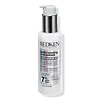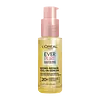What's inside
What's inside
 Key Ingredients
Key Ingredients

 Benefits
Benefits

 Concerns
Concerns

 Ingredients Side-by-side
Ingredients Side-by-side

Water
Skin ConditioningIsopropyl Myristate
EmollientDimethicone
EmollientTriethanolamine
BufferingAmodimethicone
Phenoxyethanol
PreservativeSqualane
EmollientParfum
MaskingCarbomer
Emulsion StabilisingPolyquaternium-4
Potato Starch Modified
Hydroxypropyl Guar
Emulsion StabilisingCitric Acid
BufferingBehentrimonium Chloride
PreservativeSodium Polyglutamate
HumectantCoco-Betaine
CleansingTrideceth-6
EmulsifyingIsopropyl Alcohol
SolventSodium Chloride
MaskingCetrimonium Chloride
AntimicrobialLimonene
PerfumingLinalool
PerfumingGeraniol
PerfumingCitronellol
PerfumingCoumarin
PerfumingAlpha-Isomethyl Ionone
PerfumingWater, Isopropyl Myristate, Dimethicone, Triethanolamine, Amodimethicone, Phenoxyethanol, Squalane, Parfum, Carbomer, Polyquaternium-4, Potato Starch Modified, Hydroxypropyl Guar, Citric Acid, Behentrimonium Chloride, Sodium Polyglutamate, Coco-Betaine, Trideceth-6, Isopropyl Alcohol, Sodium Chloride, Cetrimonium Chloride, Limonene, Linalool, Geraniol, Citronellol, Coumarin, Alpha-Isomethyl Ionone
Isododecane
EmollientDipropylene Glycol
HumectantWater
Skin ConditioningDimethicone
EmollientAlcohol Denat.
AntimicrobialGlycerin
HumectantDimethiconol
EmollientPEG-14 Dimethicone
Skin ConditioningHydroxyethyl Urea
HumectantParfum
MaskingCitric Acid
BufferingPhenoxyethanol
PreservativePolyacrylamide
PEG-60 Hydrogenated Castor Oil
EmulsifyingC13-14 Isoparaffin
EmollientSodium Citrate
BufferingLaureth-7
EmulsifyingPropylene Glycol
HumectantLinalool
PerfumingLimonene
PerfumingHydroxycitronellal
PerfumingCitronellol
PerfumingIsoeugenol
PerfumingCitral
PerfumingPentaerythrityl Tetra-Di-T-Butyl Hydroxyhydrocinnamate
AntioxidantIsododecane, Dipropylene Glycol, Water, Dimethicone, Alcohol Denat., Glycerin, Dimethiconol, PEG-14 Dimethicone, Hydroxyethyl Urea, Parfum, Citric Acid, Phenoxyethanol, Polyacrylamide, PEG-60 Hydrogenated Castor Oil, C13-14 Isoparaffin, Sodium Citrate, Laureth-7, Propylene Glycol, Linalool, Limonene, Hydroxycitronellal, Citronellol, Isoeugenol, Citral, Pentaerythrityl Tetra-Di-T-Butyl Hydroxyhydrocinnamate
 Reviews
Reviews

Ingredients Explained
These ingredients are found in both products.
Ingredients higher up in an ingredient list are typically present in a larger amount.
Citric Acid is an alpha hydroxy acid (AHA) naturally found in citrus fruits like oranges, lemons, and limes.
Like other AHAs, citric acid can exfoliate skin by breaking down the bonds that hold dead skin cells together. This helps reveal smoother and brighter skin underneath.
However, this exfoliating effect only happens at high concentrations (20%) which can be hard to find in cosmetic products.
Due to this, citric acid is usually included in small amounts as a pH adjuster. This helps keep products slightly more acidic and compatible with skin's natural pH.
In skincare formulas, citric acid can:
While it can provide some skin benefits, research shows lactic acid and glycolic acid are generally more effective and less irritating exfoliants.
Most citric acid used in skincare today is made by fermenting sugars (usually from molasses). This synthetic version is identical to the natural citrus form but easier to stabilize and use in formulations.
Read more about some other popular AHA's here:
Learn more about Citric AcidCitronellol is used to add fragrance/parfum to a product. It is often derived from plants such as roses. In fact, it can be found in many essential oils including geranium, lavender, neroli, and more. The scent of Citronellol is often described as "fresh, grassy, and citrus-like".
Since the Citronellol molecule is already unstable, Citronellol becomes irritating on the skin when exposed to air.
Citronellol is a modified terpene. Terpenes are unsaturated hydrocarbons found in plants. They make up the primary part of essential oils.
Citronellol is not able to be absorbed into deeper layers of the skin. It has low permeability,
Citronellol is also a natural insect repellent.
Learn more about CitronellolDimethicone is a type of synthetic silicone created from natural materials such as quartz.
What it does:
Dimethicone comes in different viscosities:
Depending on the viscosity, dimethicone has different properties.
Ingredients lists don't always show which type is used, so we recommend reaching out to the brand if you have questions about the viscosity.
This ingredient is unlikely to cause irritation because it does not get absorbed into skin. However, people with silicone allergies should be careful about using this ingredient.
Note: Dimethicone may contribute to pilling. This is because it is not oil or water soluble, so pilling may occur when layered with products. When mixed with heavy oils in a formula, the outcome is also quite greasy.
Learn more about DimethiconeLimonene is a fragrance that adds scent and taste to a formulation.
It's found in the peel oil of citrus fruits and other plants such as lavender and eucalyptus. The scent of limonene is generally described as "sweet citrus".
Limonene acts as an antioxidant, meaning it helps neutralize free radicals.
When exposed to air, oxidized limonene may sensitize the skin. Because of this, limonene is often avoided by people with sensitive skin.
The term 'fragrance' is not regulated in many countries. In many cases, it is up to the brand to define this term. For instance, many brands choose to label themselves as "fragrance-free" because they are not using synthetic fragrances. However, their products may still contain ingredients such as essential oils that are considered a fragrance.
Learn more about LimoneneLinalool is a fragrance and helps add scent to products. It's derived from common plants such as cinnamon, mint, citrus, and lavender.
Like Limonene, this ingredient oxidizes when exposed to air. Oxidized linalool can cause allergies and skin sensitivity.
This ingredient has a scent that is floral, spicy tropical, and citrus-like.
Learn more about LinaloolParfum is a catch-all term for an ingredient or more that is used to give a scent to products.
Also called "fragrance", this ingredient can be a blend of hundreds of chemicals or plant oils. This means every product with "fragrance" or "parfum" in the ingredients list is a different mixture.
For instance, Habanolide is a proprietary trade name for a specific aroma chemical. When used as a fragrance ingredient in cosmetics, most aroma chemicals fall under the broad labeling category of “FRAGRANCE” or “PARFUM” according to EU and US regulations.
The term 'parfum' or 'fragrance' is not regulated in many countries. In many cases, it is up to the brand to define this term.
For instance, many brands choose to label themselves as "fragrance-free" because they are not using synthetic fragrances. However, their products may still contain ingredients such as essential oils that are considered a fragrance by INCI standards.
One example is Calendula flower extract. Calendula is an essential oil that still imparts a scent or 'fragrance'.
Depending on the blend, the ingredients in the mixture can cause allergies and sensitivities on the skin. Some ingredients that are known EU allergens include linalool and citronellol.
Parfum can also be used to mask or cover an unpleasant scent.
The bottom line is: not all fragrances/parfum/ingredients are created equally. If you are worried about fragrances, we recommend taking a closer look at an ingredient. And of course, we always recommend speaking with a professional.
Learn more about ParfumPhenoxyethanol is a preservative that has germicide, antimicrobial, and aromatic properties. Studies show that phenoxyethanol can prevent microbial growth. By itself, it has a scent that is similar to that of a rose.
It's often used in formulations along with Caprylyl Glycol to preserve the shelf life of products.
Water. It's the most common cosmetic ingredient of all. You'll usually see it at the top of ingredient lists, meaning that it makes up the largest part of the product.
So why is it so popular? Water most often acts as a solvent - this means that it helps dissolve other ingredients into the formulation.
You'll also recognize water as that liquid we all need to stay alive. If you see this, drink a glass of water. Stay hydrated!
Learn more about Water